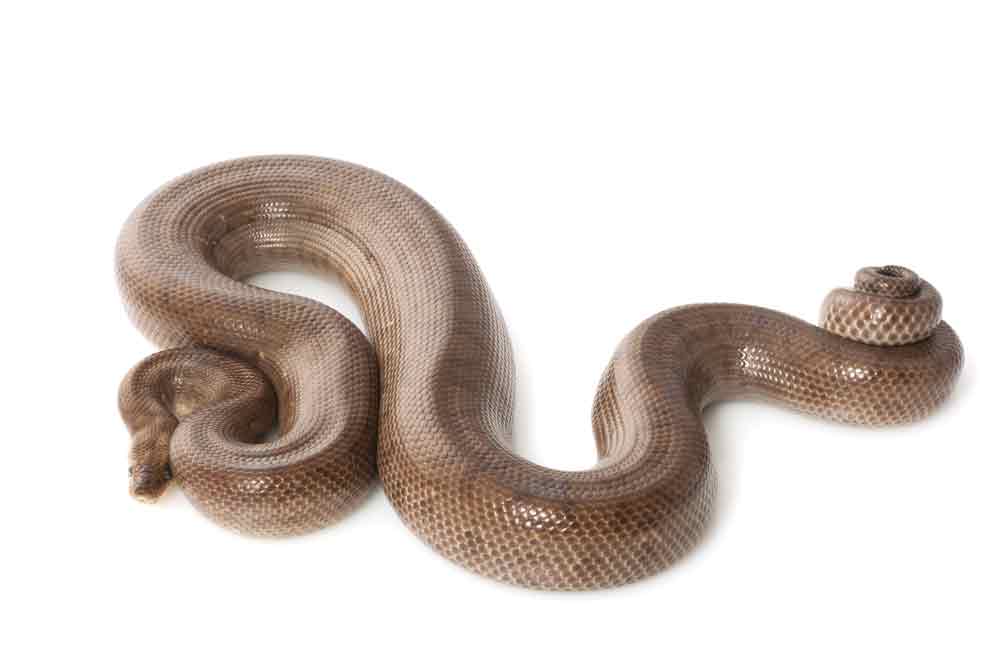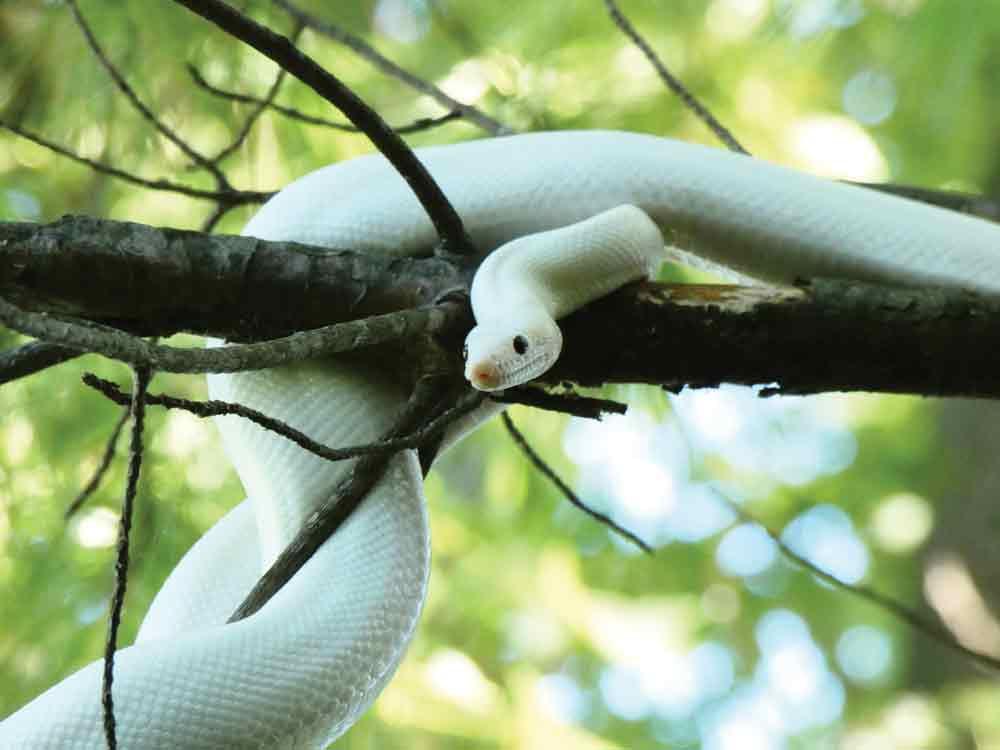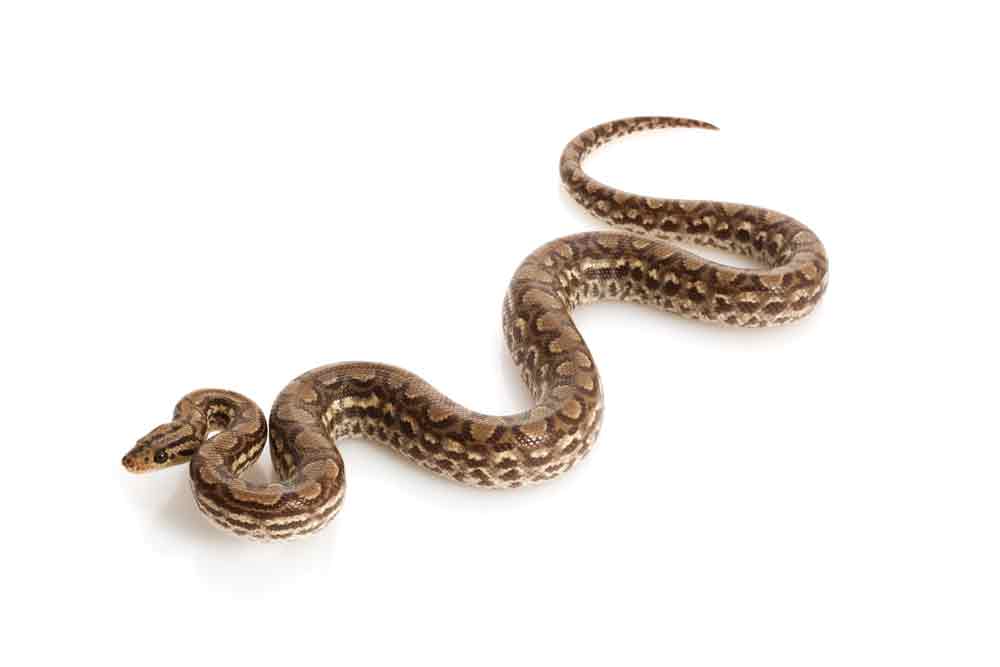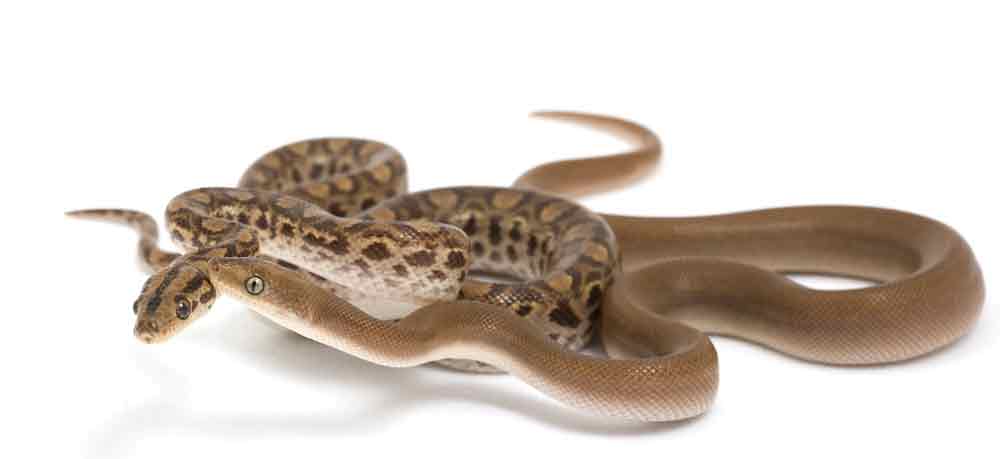Colombian rainbow boas are a fascinating species distinguished by their stunning iridescence and friendly demeanor.
Epicrates maurus, or the Colombian rainbow boa, is a stunning snake species most renowned for their pearly, iridescent sheen. While their chromatic display is not as vibrant as their cousin, the Brazilian rainbow boa, they are nonetheless a magnificent species that is very rewarding to keep.
As inhabitants of tropical Central and South America, these prismatic beauties have been observed as being semi-arboreal in nature and retaining a docile temperament in captivity. Colombian rainbow boas are easily handleable and make excellent companions, but due to their more definitive husbandry requirements, they are best suited for those well versed in keeping snakes.
The Right Enclosure
While Colombian rainbow boas are the smallest of the rainbow boa genus, they do appreciate any and all space provided to them. Since they are semi-arboreal, it is important to offer not only adequate floor space, but vertical space, as well. I keep my Colombian rainbow boas in 4’ x 2’ x 2’ PVC enclosures so that they have the opportunity to stretch out and climb as they see fit. Since this species does have relatively high humidity requirements, I strongly suggest opting for a PVC enclosure over glass, as PVC retains moisture much more effectively. A water dish large enough for them to soak in should also be provided, as they will often take up the opportunity to soak while in shed, even with high ambient humidity.

Colombian rainbow boa. Photo by five spots/Shutterstock
Substrate and Humidity
Colombian rainbow boas should be kept on a substrate that will retain moisture well enough to meet their humidity requirements of 75-80+ percent. I prefer to use a blend of sphagnum peat moss and vermiculite, but you can create a blend out of substrates such as coconut husk as well. To keep the environment consistently humid, I add a cup of water with the addition of new substrate, then mix in more water every week or two as necessary. That said, you will also need to ensure that you have adequate ventilation so that you do not create a bacterial breeding ground within the enclosure.
How much ventilation you provide will vary depending upon the environment in which you live, but ideally, you want to try to maintain humidity within the correct range without having an excess amount of condensation within the enclosure. Adding a drainage layer to allow for a more even distribution of moisture through the substrate is also recommended.
The Importance of Heating
Supplying heat for Colombian rainbow boas is relatively simple, although it is important to note that they are exceptionally sensitive to temperatures above 90 degrees Fahrenheit (32.2 degrees Celsius). Therefore, investing in a high-quality thermostat is strongly recommended to avoid catastrophic malfunctions and/or accidental overheating. You should provide a temperature gradient of 70 degrees Fahrenheit (21.1 degrees Celsius) on the cool side, 82 to 85 degrees Fahrenheit (27.8 to 29.4 degrees Celsius) on the warm side, and an ambient temperature of about 78 to 80 degrees Fahrenheit (25.6 to 26.7 degrees Celsius) to allow them to comfortably thermoregulate. This can be achieved through various heat sources, including heat mats/tape, ceramic heat emitters (CHEs), and radiant heat panels (RHPs). They will also take up the opportunity to bask if you provide them with a low-wattage UVA + UVB bulb to do so during the daylight hours. As with all heating elements, be sure to properly secure your thermostat probe and always check to verify that your device(s) are functioning correctly.

A white Colombian rainbow boa. Photo by Scarlett Nightshade
Diet and Feeding
Colombian rainbow boas have a ravenous appetite and rarely refuse to eat unless they are about to shed. With a standard diet consisting primarily of mice and/or young rats, feeding this species is one of the most rewarding aspects of keeping them. That said, hatchlings and juveniles may take a moment to begin striking at their food, as they often prefer the feeder be pushed lightly against their mouths for them to gently take from the feeding tongs. As they reach adulthood, however, they typically have no problem striking and constricting their food as expected. Since this species is relatively small in size, you should not have to feed prey items much larger than an extra large mouse or rat pup. While hatchlings usually need to be started on live fuzzy mice, Colombian rainbow boas are easily converted to frozen/thawed feeders, and can even be offered chicks and quail on occasion to offer dietary variety.

The Colombian rainbow boa is a small boa, wth the larger females growing to about five feet in length. Photo by five spots/Shutterstock
Colombian Rainbow Boa Morphs and Coloration
Colombian rainbow boas are characterized by their iridescent sheen and pearly bellies in combination with a muted brown coloration, dark dorsal saddles and spotting across their lateral scales. There are a few morphological varieties, including leucistic (lacking almost all pigment), anerythristic (lacking red pigment), hypomelanistic (reduced black/brown pigment), albino (lacking black/brown pigment), caramel albino and “Paradigm” (a cross between a T- albino and T+ albino). Interestingly, morphs that lack melanin also have reduced iridescence, with leucistic morphs having none whatsoever. Many leucistic specimens also exhibit another fascinating trait, in which they have one black eye and one blue eye. It seems there may be a lot of potential in the morphology of this species yet to be discovered.
Breeding Colombian Rainbow Boas
Upon reaching about 3 to 4 years of age, breeding selection should be determined based upon body condition relative to length. Males should be around 42 inches long, while females should be around 60 inches long. When breeding Colombian rainbow boas, it is crucial to have a cooling period to prepare them for reproduction. I begin fasting two to three weeks prior to the cool-down period, in which they are then cooled at 68 degrees Fahrenheit (20.0 degrees Celsius) at the end of October to be ready for breeding in December. Following the cooling period, temperatures are gradually raised to 80 to 85 degrees Fahrenheit (26.7 to 29.4 degrees Celsius) and breeding begins. After six months of gestation, the female gives live birth to a litter between 10 to 20+ young, which are typically large enough to take live fuzzy mice after their first shed.
Enrichment
Colombian rainbow boas will appreciate any and all enrichment you provide for them. As a semi-arboreal species, you should offer various perches for them to utilize. I prefer to use PVC pipes to achieve this, since wooden elements such as driftwood tend to decay over time in such a humid environment. They will also enjoy a basking spot and elevated hides, as well. Feel free to get creative with the climbing enrichment; this species is always looking for new things to explore!
Conclusion
In summary, Colombian rainbow boas are a fascinating species distinguished by their stunning iridescence and friendly demeanor. While less commonly kept than other species, they make wonderful companions for more experienced keepers and are a joy to observe and interact with. When provided with spaciousness and enrichment, their natural behaviors come alive, making them an excellent display snake for all to appreciate. They truly are one of the most rewarding boas to keep!
Scarlett Nightshade works with a variety of snakes, including the paradise flying snake, dragon snakes and false water cobras, as well as common species such as corn snakes, kingsnakes, and milksnakes. For more information, visit creaturesofnightshade.com.


